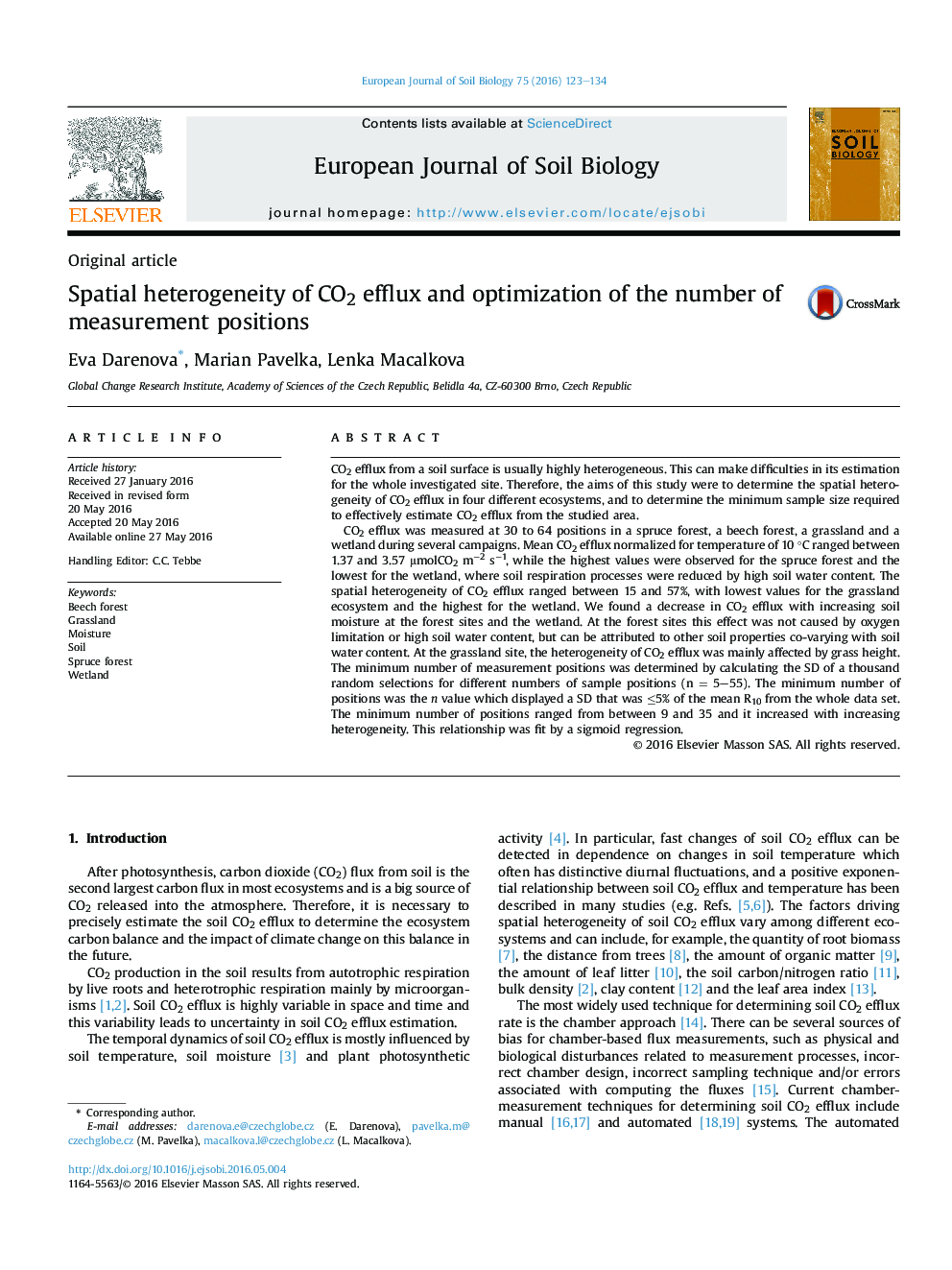| کد مقاله | کد نشریه | سال انتشار | مقاله انگلیسی | نسخه تمام متن |
|---|---|---|---|---|
| 4391645 | 1618117 | 2016 | 12 صفحه PDF | دانلود رایگان |

• Spatial heterogeneity and its drivers were studied on four different ecosystems.
• Spatial heterogeneity of CO2 efflux ranged between 15 and 57%.
• Determination of a minimum sample size was set on the base of heterogeneity.
CO2 efflux from a soil surface is usually highly heterogeneous. This can make difficulties in its estimation for the whole investigated site. Therefore, the aims of this study were to determine the spatial heterogeneity of CO2 efflux in four different ecosystems, and to determine the minimum sample size required to effectively estimate CO2 efflux from the studied area.CO2 efflux was measured at 30 to 64 positions in a spruce forest, a beech forest, a grassland and a wetland during several campaigns. Mean CO2 efflux normalized for temperature of 10 °C ranged between 1.37 and 3.57 μmolCO2 m−2 s−1, while the highest values were observed for the spruce forest and the lowest for the wetland, where soil respiration processes were reduced by high soil water content. The spatial heterogeneity of CO2 efflux ranged between 15 and 57%, with lowest values for the grassland ecosystem and the highest for the wetland. We found a decrease in CO2 efflux with increasing soil moisture at the forest sites and the wetland. At the forest sites this effect was not caused by oxygen limitation or high soil water content, but can be attributed to other soil properties co-varying with soil water content. At the grassland site, the heterogeneity of CO2 efflux was mainly affected by grass height. The minimum number of measurement positions was determined by calculating the SD of a thousand random selections for different numbers of sample positions (n = 5–55). The minimum number of positions was the n value which displayed a SD that was ≤5% of the mean R10 from the whole data set. The minimum number of positions ranged from between 9 and 35 and it increased with increasing heterogeneity. This relationship was fit by a sigmoid regression.
Journal: European Journal of Soil Biology - Volume 75, July–August 2016, Pages 123–134